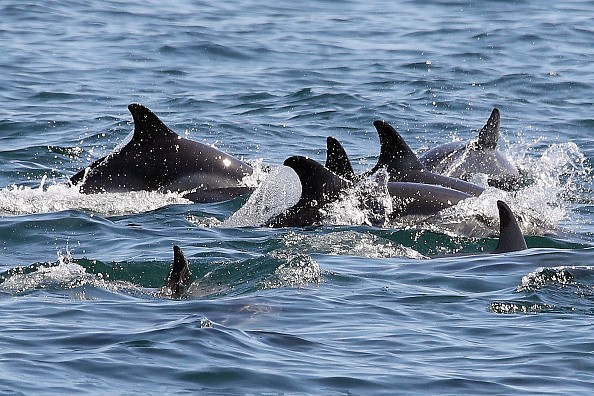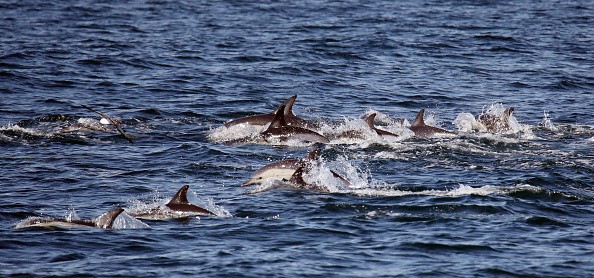Male dolphins invite their friends when the time to pillage and raid comes, like members of a street gang. A new study shows they do this by getting to know the "names," or signature whistles, of their closest allies - sometimes over a dozen animals - and having the one who usually cooperated with them in the past in mind.

Male Dolphins Cooperate As a Pair or Trio
The discovery designates dolphins have an idea of team membership - formerly found in humans only - and may assist in revealing how they sustain such complex and tight-knit societies. A behavioral ecologist at the University of St. Andrews, Luke Rendell, who was not part of the research said: "The work adds proof to the notion that dolphins developed large brains to maneuver their complicated social environments."
Male dolphins generally cooperate as a pair or trio, in what experts call a "first-order alliance." These small groups work jointly to discover and corral a female that is fertile. Males cooperate also in second-order alliances with the inclusion of as many as 14 dolphins; these guard against rival groups making attempts to capture the female.
Also Read : Dolphins Have Friends, Too
The Core Unit of the Males' Society
Some second-order alliances come together in even larger third-order alliances, making males available in these groups with an even better opportunity of having allies close by in case rivals attack. Dolphins switch partners frequently in their first-order alliances, but they remain with their allies in the second-order groups for decades, as stated by long-term behavioral studies at Shark Bay in Western Australia.
These groups are known as the core unit of the males' society. The males "stick together for their lifetimes," for as long as 40 years, a behavioral biologist at the University of Bristol, Stephanie King noted. But how do the males keep up with everyone in these complicated groups? Experts have disputed that their whistles are crucial.
Every dolphin learns a distinct signature whistle from its mother, which it uses for life; dolphins remember and recognize the whistles of each other, the same as to how we recognize the names of each other.

Indo-Pacific Bottlenose Dolphins
To investigate furtherly how the male dolphins make use of their whistles, King and her team turned to a population of Indo-Pacific bottlenose dolphins (Tursiops aduncus) inhabiting the exceptionally clear waters of Shark Bay.
Since 2016, the team has trailed the animals with an arrangement of underwater microphones, enabling them to recognize which dolphin makes which whistle sound. From 2018 to 2019, the experts installed speakers underwater and played the whistles of males to other males in their diverse alliances.
These males ranged in age from 28 to 40 years old and had been in these groups their whole lives. Meanwhile, the researchers flew a drone overhead to record the responses of the dolphins.
Related Article : Are Captive Dolphins Healthy?
For more news, updates about dolphins and similar topics don't forget to follow Nature World News!
© 2025 NatureWorldNews.com All rights reserved. Do not reproduce without permission.





